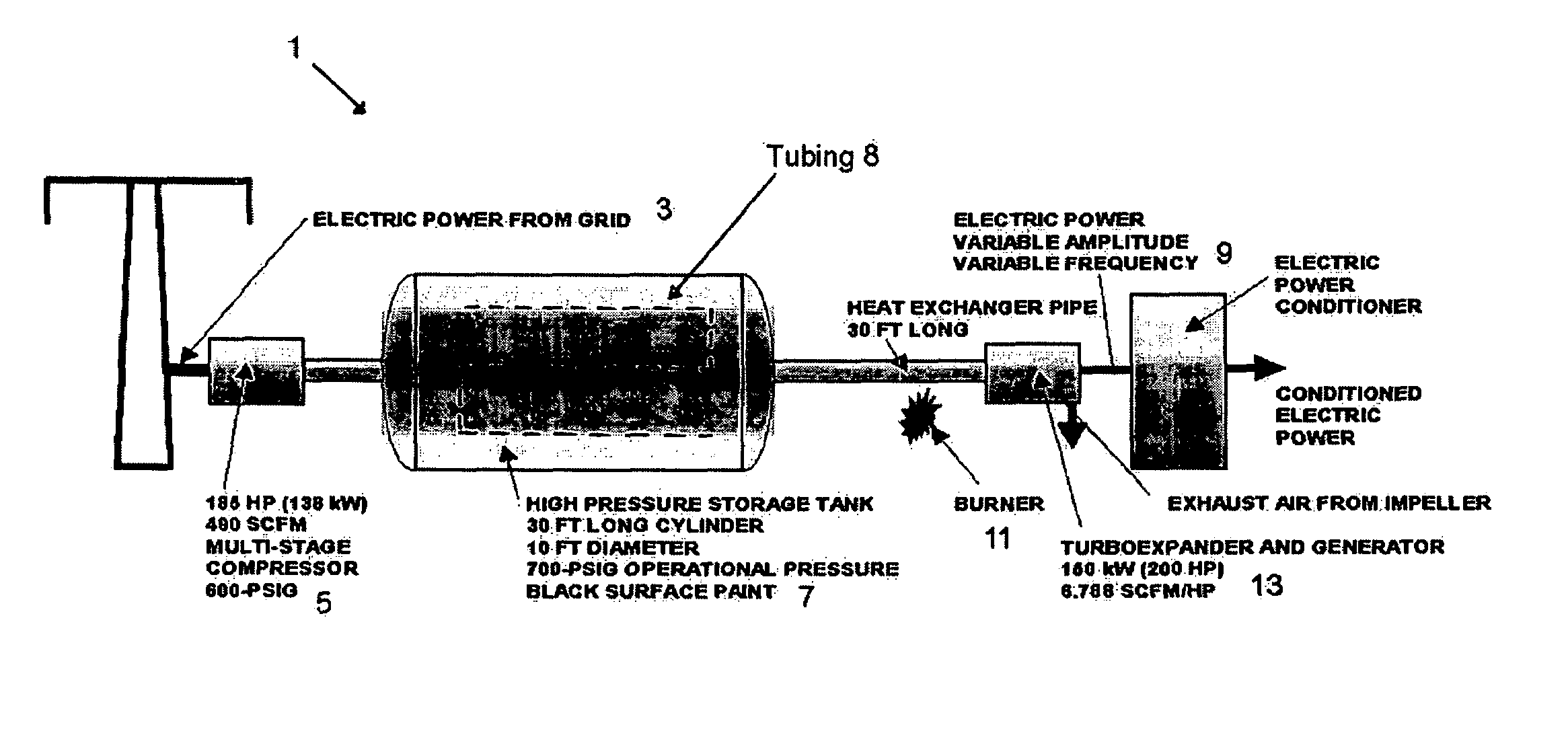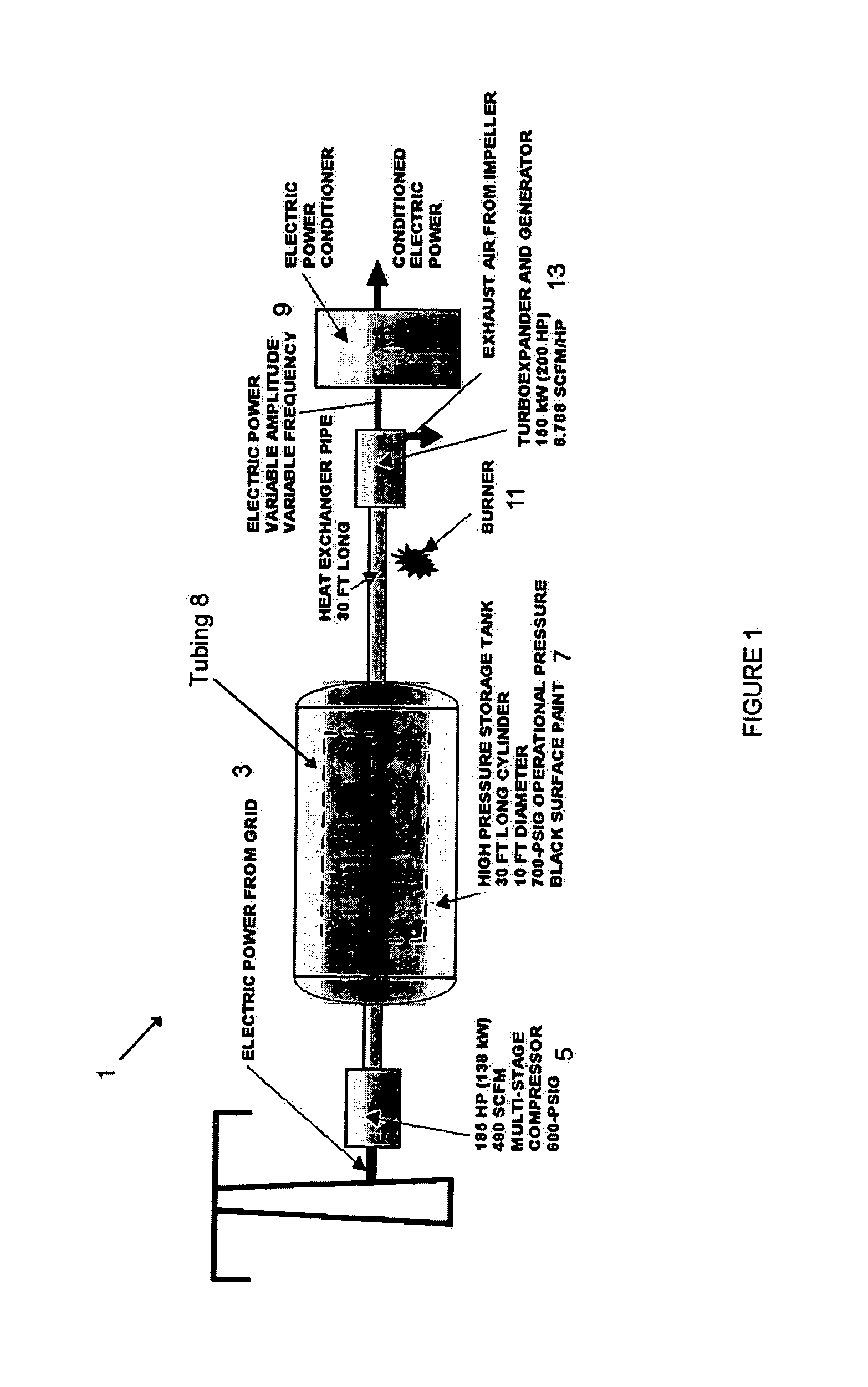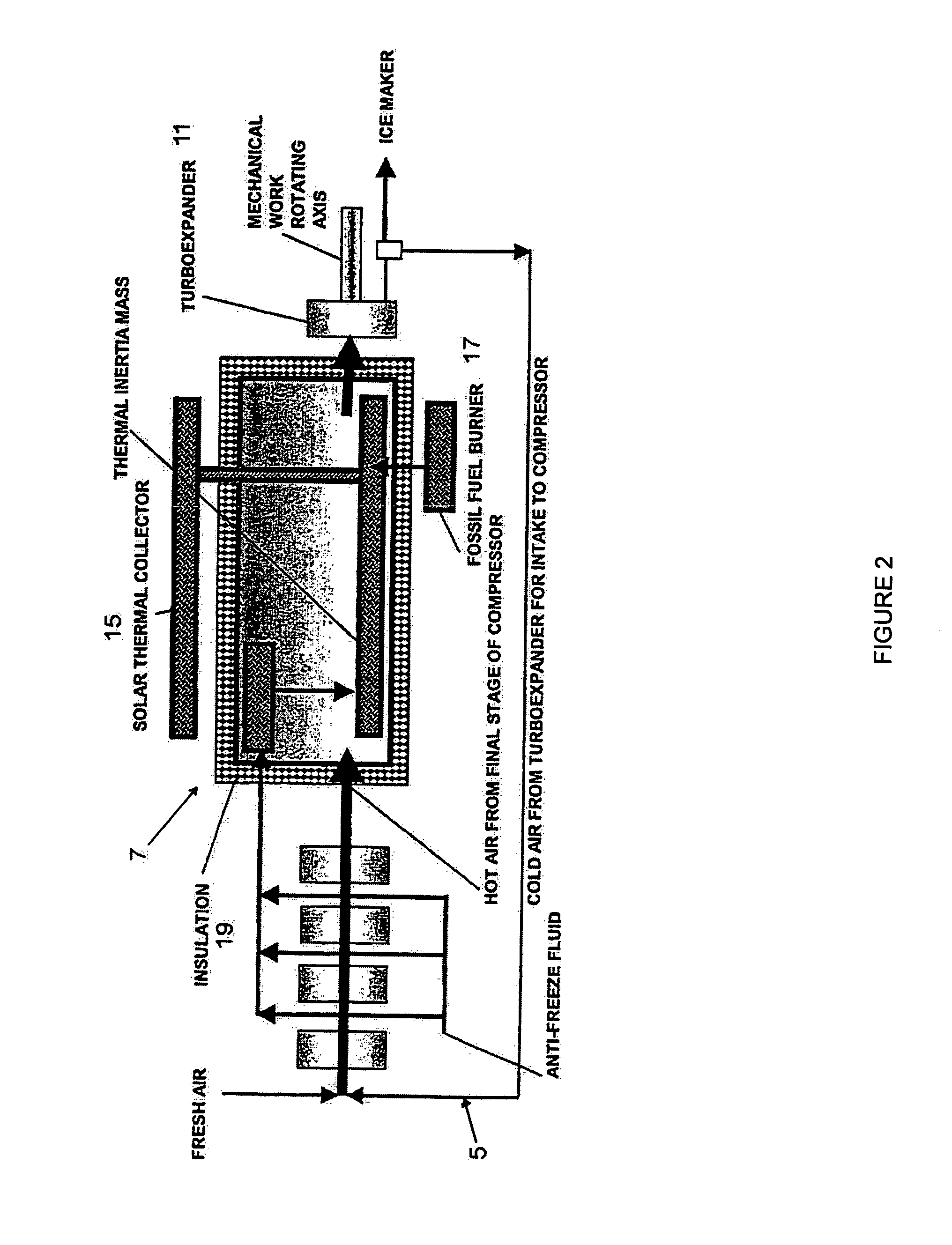Method and apparatus for storing and using energy to reduce the end-user cost of energy
a technology of energy storage and end-user cost, applied in the direction of heat storage plants, mechanical power/torque control, ratio control, etc., can solve the problems of less than peak efficiency and performance, heavy burden on utility plants and grids, and inability to meet the needs of users, etc., to reduce the reliance on the power grid, energy costs are relatively low, and energy costs are relatively high
- Summary
- Abstract
- Description
- Claims
- Application Information
AI Technical Summary
Benefits of technology
Problems solved by technology
Method used
Image
Examples
Embodiment Construction
[0017]This discussion will begin by discussing some of the basic components of the energy storage system apparatus that can be used by the present invention. The invention contemplates that various energy storage systems can be used in connection with the methods discussed herein. Nevertheless, the following discussion describes a preferred system that can be used in connection with the present invention.
[0018]The system generally comprises a compressed air energy storage system small enough to be housed within a commercial property, whether an office building, shopping center, or other end-user of energy. For example, the system can be installed in a basement of an office building, shopping center or commercial complex, where other utility equipment might be located. The storage tank can also be located on the roof or other outdoor location, and, for example, painted black, to enable the tank to absorb heat energy from the sun, as will be discussed.
[0019]As shown in FIG. 1, the sys...
PUM
 Login to View More
Login to View More Abstract
Description
Claims
Application Information
 Login to View More
Login to View More - R&D
- Intellectual Property
- Life Sciences
- Materials
- Tech Scout
- Unparalleled Data Quality
- Higher Quality Content
- 60% Fewer Hallucinations
Browse by: Latest US Patents, China's latest patents, Technical Efficacy Thesaurus, Application Domain, Technology Topic, Popular Technical Reports.
© 2025 PatSnap. All rights reserved.Legal|Privacy policy|Modern Slavery Act Transparency Statement|Sitemap|About US| Contact US: help@patsnap.com



